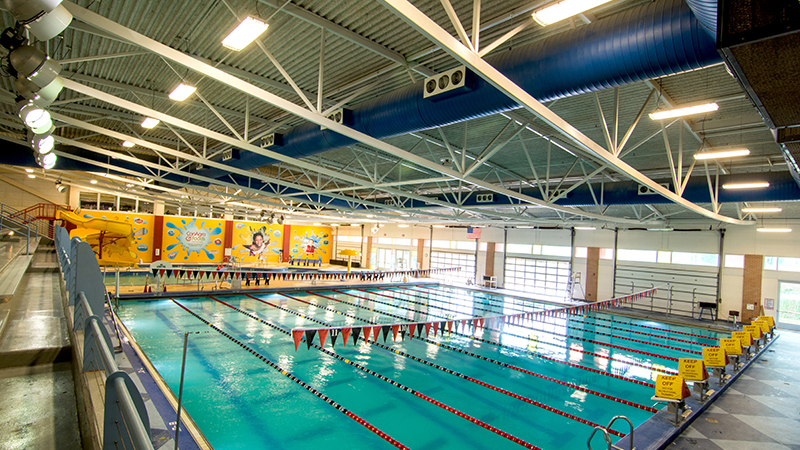Case Studies
The Jones Center for Families, Springdale, Arkansas
Clear Energy helped The Jones Center for Families identify and implement energy-saving opportunities to more efficiently heat and cool the facility, heat the swimming pools and provide domestic hot water, and to monitor water levels and temperatures. Once completed, the project’s actual performance far exceeded utility incentive projections, resulting in a near 50% increase in efficiency-incentive rebates.

Overview:
The 220,000 sq. ft. Jones Center is a recreation, education and event center for families located in downtown Springdale, Arkansas. The center plays host to more than 750,000 visitors annually who are attracted to its year-round ice arena, junior Olympic-size lap pool, family activity pool, indoor track and more.
Scope of Work:
The center and its pools were heated with two inefficient steam boilers that were nearing the end of their operational usefulness. Clear Energy was engaged to identify and implement energy conservation measures for the building. One of the opportunities identified included conversion of the existing steam boiler system to a hot water system using six highly efficient condensing boilers.
Additional Opportunities Included:
- Designing and implementing an automated building management system
- Changing out heating coils in all air handling units
- Adding variable-frequency drives (VFDs)
- Power factor correction to reduce utility costs
The Results:
- Energy used to heat the center and the pools was significantly reduced as condensing boilers are much more efficient than steam boilers, which operate at higher temperatures. The new boilers are rated 95% efficient as opposed to a 65% efficiency rating for the outdated steam boilers.
- Maintenance costs were lowered as the switch from steam to water eliminated the need for 24/7 monitoring by center personnel. More maintenance savings were realized from the addition of the new automated building management system. It replaced outdated pneumatic controllers and removed problematic air lines. The ability to access and operate the control system from a web browser allows the maintenance staff to troubleshoot and fix issues remotely.
- Energy was also saved and comfort enhanced through the automated building control system, which lets center personnel more easily monitor and manage the building and react quicker to temperature changes. Occupancy sensors automatically turn off lights and adjust thermostats in unoccupied rooms, and since the system is all-digital, it’s more reliable and easier to upgrade.
- Efficiency and comfort were also improved with the addition of VFDs to adjust the speed of pumps and motors based on demand. The VFDs provide soft starts to prolong the overall life of equipment.
- An annual utility reactive power penalty was eliminated by the installation of a capacitor bank.
The work was structured to minimize disruption in day-to-day activities. The center was never shuttered as a result of the project, nor the pool closed.
This was the second energy-improvement project Clear Energy completed for the center, the first being a lighting retrofit that reduced electricity used for lighting by more than 50%. More than 3,000 fixtures were either replaced or retrofitted and 580 occupancy sensors and photocells were installed.
Clear Energy assisted in obtaining more than $100,000 of utility incentive payments for the work to improve the payback on the investment by The Jones Trust.
